巻号一覧

27 巻, 12 号
選択された号の論文の8件中1~8を表示しています
- |<
- <
- 1
- >
- >|
-
寺井 士郎1977 年 27 巻 12 号 p. 577-578
発行日: 1977/12/30
公開日: 2008/07/23
ジャーナル フリーPDF形式でダウンロード (256K) -
堀江 史郎, 中村 正久, 植木 正憲1977 年 27 巻 12 号 p. 579-583
発行日: 1977/12/30
公開日: 2008/07/23
ジャーナル フリーHot torsion tests were conducted on the 5083 aluminum alloy having cast structure under the conditions of shear strain rate range from 0.1 to 75 sec-1 and temperature range from 400°C to 500°C. The two stages solution treated materials are superior in hot workability than one stage treated ones. It is possible by electron microprobe analyses to deduce the composition and relative amount of constituent elements of the precipitated intermetallic compounds which decrease the ductility of the alloy. These intermetallic compounds are composed of such elements as Fe, Mn, Cr and Si.抄録全体を表示PDF形式でダウンロード (988K) -
津田 大, 伊藤 太一郎, 中山 豊1977 年 27 巻 12 号 p. 584-589
発行日: 1977/12/30
公開日: 2008/07/23
ジャーナル フリーAl-0.5, 1.0 and 1.5 at% Cu alloy single crystals were quenched from 500°C. All the alloys allow a similar stress-strain behavior. The stress-strain curves show serrations near room temperature and yielding phenomena above 300°C. CRSS reversely depends on temperatures from -78° to 80°C. A peculiar maximum in CRSS is found at 80°C. When the strain rate in this region changes from ε1 to ε2 (ε1 > ε2), difference in the flow stress decreases resulting inτ2 > τ1 at room temperature. Edge dislocations forming dipoles uniformly distribute at -196°C, and tend to cluster at elevated temperatures. Long dislocation loops are found at 100°C, which are formed by the intersection with prismatic dislocation loops grown during heating. A peak in CRSS at 80°C and a stress exponent above 300°C are also theoretically described.抄録全体を表示PDF形式でダウンロード (1104K) -
橘高 重義, 佐藤 金司, 斉藤 雄三, 宮木 美光1977 年 27 巻 12 号 p. 590-598
発行日: 1977/12/30
公開日: 2008/07/23
ジャーナル フリーDry machining tests under a constant load on the tool axis were carried out on A5056 BEF, A6061 BE-T6 and A2017 BE-F using standard helix, high helix and low helix tools. A thrust component of cutting resistance is independent of materials. Its magnitudes are ordered by the tool helix angle; (standard helix) < (high helix) < (low helix). A torque component of cutting resistance increases with increasing cutting depth. Pitch length for curled type chips increases with increasing cutting depth especially rapidly at the depth 15 and 20mm. Thicker chips are formed, when tool diameters 10 and 6mm respectively for standard helix and high helix tools are used. Superior cutting efficiency is ensured under these conditions. Surface roughness is independent of tool helix angle. When high and low helix angle tools are used, the ratio of burr height to specimen thickness is independent of free feed velocity. The ratio for standard helix tool decreases with increasing feed velocity especially for larger tool diameter.抄録全体を表示PDF形式でダウンロード (2563K) -
円谷 和雄, 本間 一光, 渡辺 俊一1977 年 27 巻 12 号 p. 599-604
発行日: 1977/12/30
公開日: 2008/07/23
ジャーナル フリーFactors governing a work softening phenomenon in Al-Fe alloys were examined. When chill cast Al-1.9%Fe alloy is incrementally rolled, hardness increases with reduction. If the alloy is heattreated to produce precipitates or hot rolled to produce dispersions of intermetallic compounds, work softening occurs at higher reductions. Work softening also occurs in the precipitated Al-0.043%Fe alloy, but in 99.9997% aluminum. Dispersions play an important role in the work softening phenomenon.抄録全体を表示PDF形式でダウンロード (1286K) -
小原 嗣朗, 今川 吉郎1977 年 27 巻 12 号 p. 605-608
発行日: 1977/12/30
公開日: 2008/07/23
ジャーナル フリーRotation bending fatigue tests at room and liquid nitrogen temperatures were carried out on 2024-T4, 5056-H32 and 1050-H18 alloys. The fatigue strength is much greater at the liquid nitrogen temperature than at room temperature. Both the ratio of the fatigue strength at the liquid nitrogen temperature to that at room temperature and the ratio of fatigue strength to ultimate strength of 5056-H32 alloy are greater than those of 2024-T4 alloy. The fatigue strength of 5056-H32 alloy at the liquid nitrogen temperature is nearly equal to that of 2024-T4 alloy. Therefore, when the fatigue strength at cryogenic temperature is significant, 5056-H32 having excellent weldability would be more favorable than 2024-T4 alloy.抄録全体を表示PDF形式でダウンロード (524K) -
山田 始, 田中 他喜男1977 年 27 巻 12 号 p. 609-615
発行日: 1977/12/30
公開日: 2008/07/23
ジャーナル フリーThe grain size is moderately fine in the Al-Zr alloys containing Zr up to 0.3%, but is coarse in the alloys containing more of Zr. Restriction of grain growth or stabilization of grain size at elevated temperatures is achieved with increasing Zr content. Precipitation heat treatment is also effective for the purpose. Heating rates at about 350°C has a considerable effect on the recrystallized grain size, but those at temperatures up to about 250°C have little effect. Low temperature temper hardening has an unnoted effect on recrystallization. Hone and Pearson's electrolytic etching is effective to reveal the recrystallized grain structure in the Al-Zr alloys.抄録全体を表示PDF形式でダウンロード (1979K) -
馬場 義雄1977 年 27 巻 12 号 p. 616-630
発行日: 1977/12/30
公開日: 2008/07/23
ジャーナル フリーPDF形式でダウンロード (4709K)
- |<
- <
- 1
- >
- >|